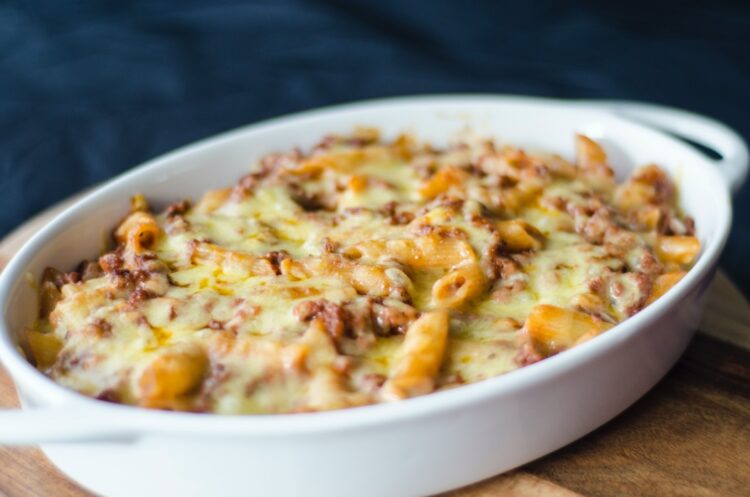Making macaroni and cheese to feed a crowd can be daunting for beginner cooks. With some planning and a few simple tricks, you can make delicious mac and cheese that will feed a crowd. In this post, I will walk you through everything you need to know to make the perfect macaroni and cheese for 30 people or more.
First, I will help you calculate how much macaroni and cheese you need to make. It’s important to make enough so everyone gets a hearty serving, but not too much that leads to waste. Next, I’ll recommend the ideal cheeses to use for maximum flavor and creaminess. Cooking the pasta properly is also key for the best texture.
From there, we’ll go over tips for assembling and baking the casserole along with the best ways to keep it warm and fresh for serving. Finally, I’ll give suggestions for storing and reheating leftovers. With the right techniques, you can have rave reviews on your mac and cheese from a big group!
If you’re looking to offer a variety of dishes for your event, consider adding some delicious pizza to your menu as well
Alexander
Alternatively, for great and easy starters, why not explore 13 Easiest Dinner Party Starters?
Determine the Amount of Macaroni Needed
Figuring out how much macaroni you need for a crowd can be tricky. Here are some tips:
- Plan for 1/2 to 3/4 cup uncooked macaroni per person. This allows for decent-sized servings.
- Buy extra boxes – it’s better to have leftovers than run short.
- Stick to standard macaroni shapes like elbows or shells – they hold sauce well.
- Opt for bite-size or smaller pasta shapes to make it easier to eat.
Use this handy chart below to estimate the amount needed for different group sizes:
| Number of People | Cups of Uncooked Macaroni | Cups of Cooked Macaroni | Cups of Cheese | Cups of Sauce |
|---|---|---|---|---|
| 1 person | 0.5 cup | 1 cup | 0.25 cup | 0.25 cup |
| 5 people | 2.5 cups | 5 cups | 1.25 cups | 1.25 cups |
| 10 people | 5 cups | 10 cups | 2.5 cups | 2.5 cups |
| 15 people | 7.5 cups | 15 cups | 3.75 cups | 3.75 cups |
| 20 people | 10 cups | 20 cups | 5 cups | 5 cups |
| 25 people | 12.5 cups | 25 cups | 6.25 cups | 6.25 cups |
| 30 people | 15 cups | 30 cups | 7.5 cups | 7.5 cups |
| 35 people | 17.5 cups | 35 cups | 8.75 cups | 8.75 cups |
| 40 people | 20 cups | 40 cups | 10 cups | 10 cups |
| 45 people | 22.5 cups | 45 cups | 11.25 cups | 11.25 cups |
| 50 people | 25 cups | 50 cups | 12.5 cups | 12.5 cups |
| 75 people | 37.5 cups | 75 cups | 18.75 cups | 18.75 cups |
| 100 people | 50 cups | 100 cups | 25 cups | 25 cups |
Top Tip: Cook a test batch using your recipe to see how much the pasta expands after cooking.
Gordon, Chef
The key is allowing for fairly generous portions. It’s better to have a little extra macaroni than to leave guests wanting more.
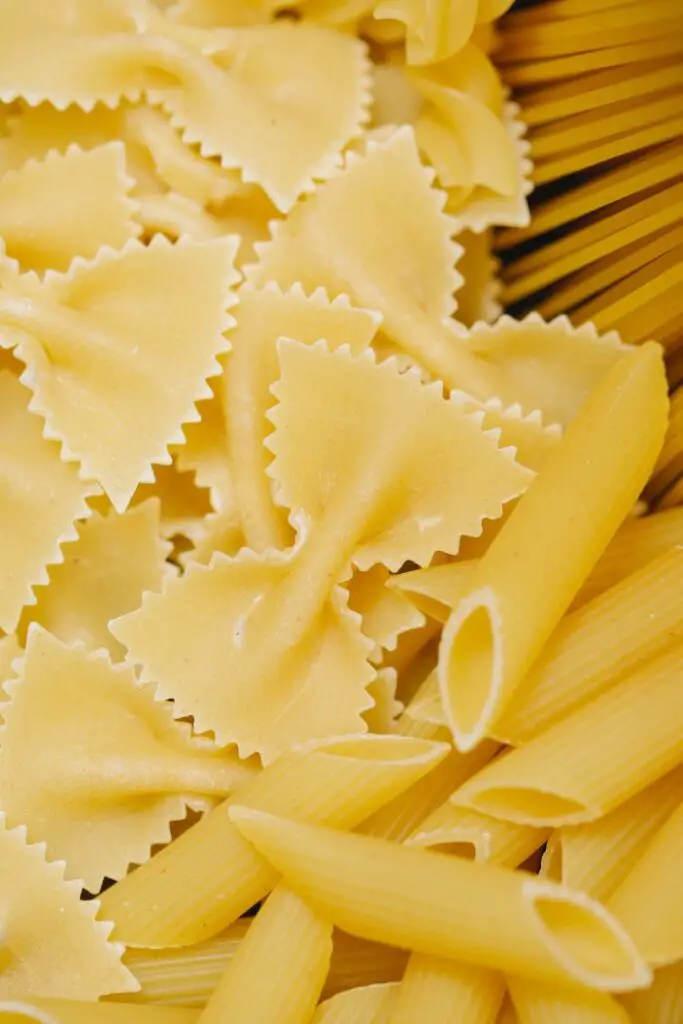
Preparing the Macaroni in Advance
Cooking the pasta ahead of time can help streamline the process when you need to feed a large group. Proper planning and preparation are key to assembling this dish efficiently.
- Cook the macaroni 1-2 days before baking the full casserole. Let the cooked pasta cool completely before storing it in an airtight container in the fridge. The pasta will keep for up to 2 days.
- When ready to use, gently reheat the chilled macaroni on the stovetop with a splash of milk or sauce to loosen it up before baking. This prevents the pasta from overcooking.
- Undercook the pasta slightly when boiling it – about 2 minutes less than the package directions. The pasta will finish cooking fully in the oven. Perfect al dente!
- Toss the cooked pasta with a bit of olive, vegetable, or canola oil before cooling and storing. This prevents the macaroni from sticking together in the fridge.
- If assembling the casserole ahead of time, portion out the macaroni into the baking dishes and keep refrigerated until ready to top with sauce and bake.
- For buffet-style service, cook the pasta, drain it, rinse it with cold water, and store chilled in a sealed container.
- Cook the pasta in smaller batches if needed to control doneness. This prevents overcooking and ensures even texture.
- Do not cook the pasta more than 1-2 days in advance for best results. The texture will suffer if stored too long.
With some advance preparation, you can have perfectly cooked al dente macaroni ready for the cheese sauce and baking. Proper planning prevents poor pasta!
Cooking the Macaroni for Optimal Texture
Perfectly cooked macaroni is essential for great mac and cheese. Follow these steps:
- Use a large pot and cook pasta in boiling salted water. Pasta should move freely.
- Set a timer and test doneness a minute or two before the directed time.
- Cook until pasta is al dente – tender but with a slight firmness at center.
- Immediately drain pasta in a colander and rinse with cold water to stop cooking.
- For baked mac and cheese, undercook pasta slightly since it cooks more in the oven.
- Overcooked, mushy pasta will make the casserole too soft and wet.
- If pasta seems too firm, briefly simmer in sauce or milk before baking.
- Handle pasta gently when draining and mixing to avoid breaking noodles.
- Fresh pasta cooks much quicker than dried – test often.
Perfect pasta texture takes some trial and error – when in doubt, err on the side of underdone. With the right technique, you’ll have tender, toothsome noodles ready to mix into creamy cheese sauce.
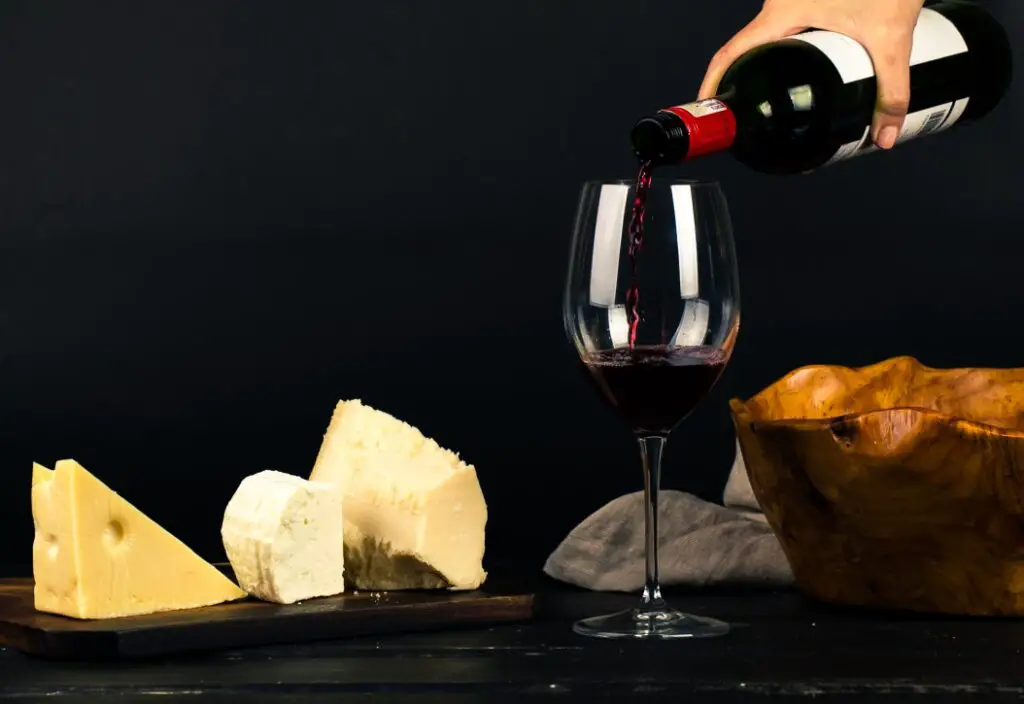
Selecting the Best Cheese(s) for Flavor
The cheese you choose is crucial for maximizing the flavor and texture of macaroni and cheese. Different cheeses contribute unique qualities:
- Cheddar provides a bold, tangy flavor and gives the dish a firm, toothsome texture when melted. Aged or extra sharp cheddar packs the most punch.
- Monterey Jack delivers creamy, melty smoothness thanks to its high moisture content. It makes the mac and cheese extra “ooey and gooey“.
- Gruyère gives a sweet, nutty richness along with tiny eyes that add interesting pockets of flavor. It melts beautifully into silkiness.
- Mixing in 20-40% Parmesan adds a sharp, salty depth and slight crunch from the cheese crystals. It gives the sauce more complexity.
Here are a few “pro” tips to help you avoid rookie mistakes:
- Shred cheese yourself rather than pre-shredded – it melts better.
- Use a blend of cheese types for depth of flavor.
- Avoid low-moisture, part-skim mozzarella – it can make the dish rubbery.
- Grate cheese on the large holes of a box grater for the best “meltability”.
- For extra indulgence, stir in Velveeta or American cheese for ultimate creaminess.
- Weigh or measure cheese to get the right amount – don’t guess.
- Add cheese gradually when making sauce – 1 cup at a time.
- Save some cheese to sprinkle on top before baking for a crispy topping.
With the right cheese choices, you’ll have a decadent, ooey-gooey mac and cheese casserole the whole group will love.
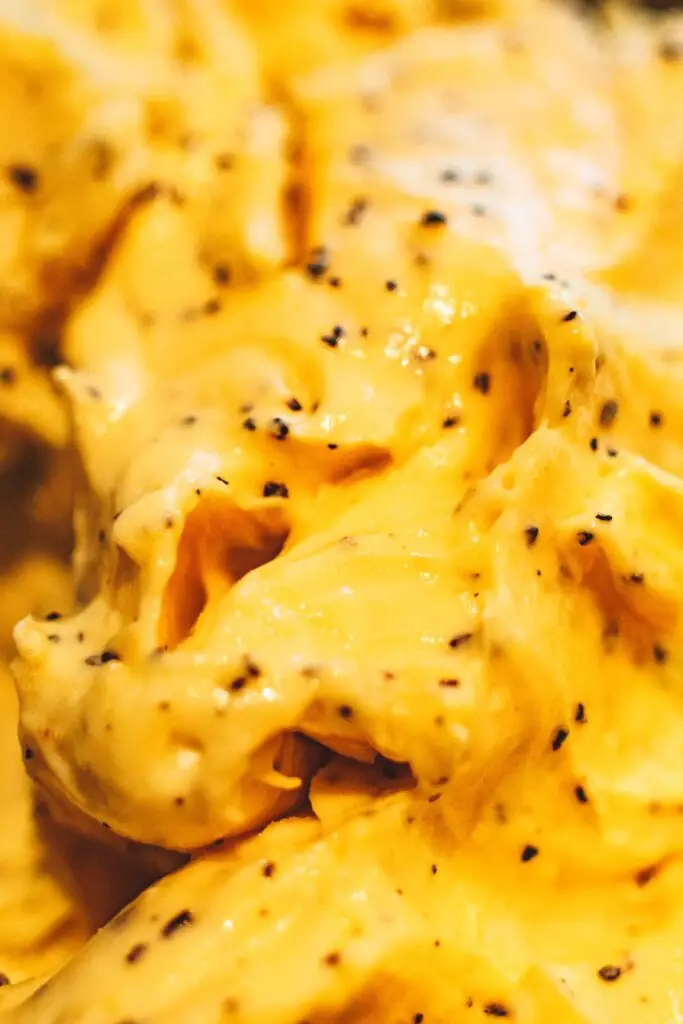
Making the Cheese Sauce
A smooth, creamy cheese sauce takes the mac and cheese to the next level. Follow these steps:
- Make a blonde roux by melting butter and whisking in an equal amount of flour. Cook for 2-3 minutes.
- Slowly whisk in warm milk, 1 cup at a time, until the sauce is smooth. Bring to a simmer.
- Add cheese a handful at a time, stirring constantly. Go slow so it fully melts.
- Use a blend of shredded cheese for the best flavor – cheddar, jack, and Parmesan work well.
- For extra richness, stir in cream cheese or Velveeta. Reduce milk if too thin.
- Season with salt, pepper, and spices like dry mustard or cayenne for a kick.
- The sauce should coat the back of a spoon. If too thick, add more milk.
- For convenience, make the sauce ahead and reheat gently before assembling.
With a properly made cheese sauce, your mac and cheese will be rich, creamy perfection. The sauce binds the ingredients together.
Baking vs. Stovetop Cooking Methods
When cooking macaroni and cheese for a large crowd of 30 people or more, you have two main options – bake it in the oven or cook it on the stovetop. Each technique has its own set of pros and cons that are important to consider based on your timeline, preparation status, serving style, and equipment available. Carefully thinking through how you want to cook the mac and cheese before you begin can ensure the best results and maximum efficiency when feeding many hungry guests.
The baking method allows you to assemble the pasta, cheese sauce, and any mix-ins or toppings into a casserole dish that then bakes up bubbly and golden brown. This technique requires some advance planning and preparation but gives you flexibility later on.
Stovetop cooking on the other hand means actively stirring and cooking a large pot of mac and cheese from start to finish. The hands-on approach doesn’t yield a crispy topping but can be good for last-minute prep.
Here’s a detailed comparison of the pros and cons of baking versus stovetop cooking for mac and cheese when serving a crowd:
| Stovetop Method | Baking Method |
|---|---|
| Pros: | Pros: |
| – Can cook large batches quickly in a big pot while stirring frequently | – Allows assembling casserole ahead of time to bake later |
| – Can keep warm in the oven for buffet service | – Provides nice crispy, browned topping |
| – Can add ingredients like meats easily | – Can keep warm in oven for buffet service |
| Cons: | Cons: |
| – Requires active cooking and stirring | – Needs some advance planning and prep |
| – No crispy topping | – Can dry out if baked too long |
| – Must transfer to chafing dish to keep warm | – Not as easy to adapt on the fly |
Just remember: Both approaches yield delicious mac and cheese!
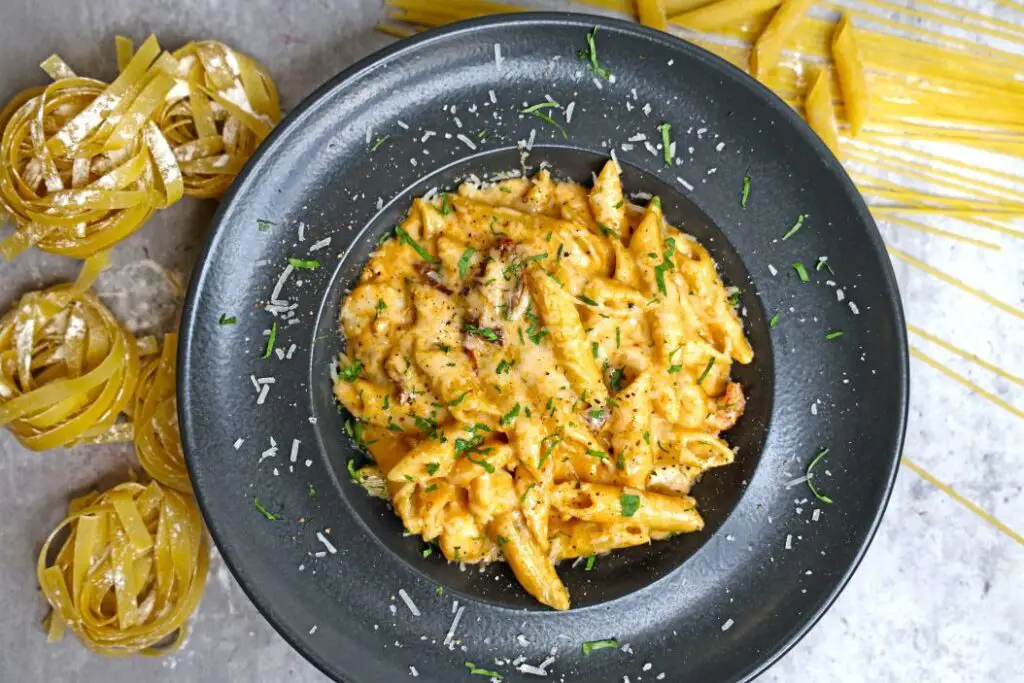
Keeping the Dish Warm and Fresh
When serving mac and cheese to a large group, it’s important to keep the dish hot and fresh tasting. Here are some tips:
- Preheat chafing dishes before transferring cooked mac and cheese into them. Use sterno (stove fuel) to keep it hot.
- For baked casseroles, keep them warm in a low oven (200°F) until ready to serve.
- Quickly stir and fold mac and cheese periodically as it sits to prevent drying out.
- Add a splash of milk and a pat of butter to restore creaminess if needed.
- Top with shredded cheese right before serving – it will melt and get ooey-gooey.
- Replace empty chafing dishes with freshly baked or cooked batches for continuous hot servings.
- Discard any mac and cheese sitting longer than 1 hour – don’t risk food safety.
With proper hot holding methods, you can ensure piping hot, creamy mac and cheese throughout the entire event.
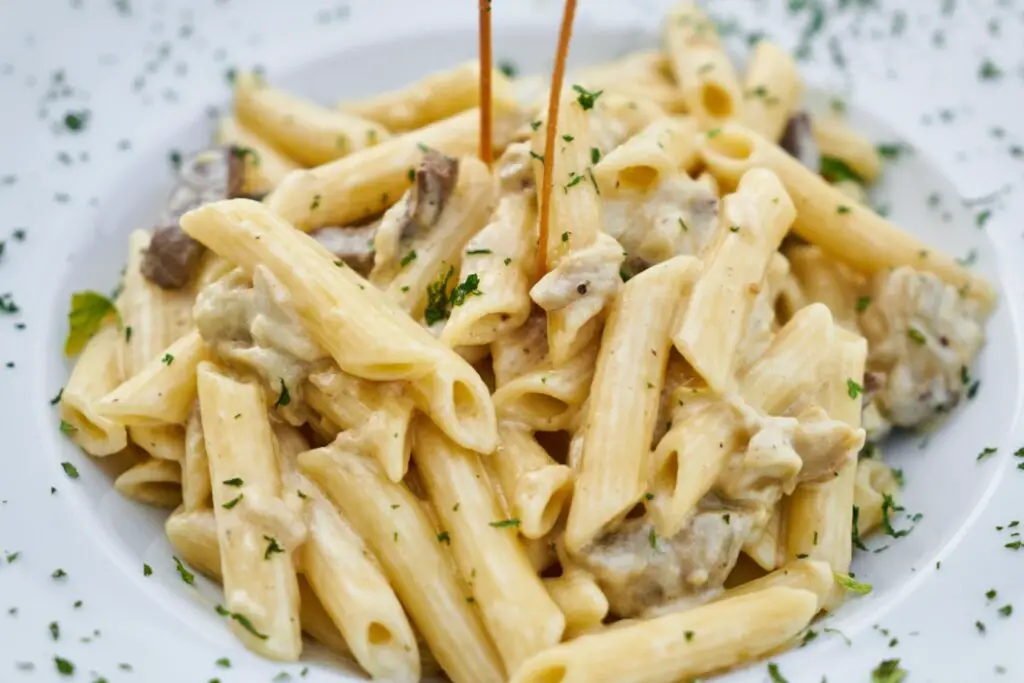
What Other Crowd-Feeding Tips Can Apply to Planning a Macaroni and Cheese Dish?
When planning a macaroni and cheese dish, consider adding a variety of crowd-pleasing ingredients like bacon, caramelized onions, or even different types of cheese to elevate the flavor. Also, think about planning a vegetable platter to balance out the richness of the dish and add a pop of color and freshness to the meal.
Presentation Tips and Serving Suggestions
The presentation and serving style of your mac and cheese are just as important as the flavor when cooking for a large group. You want your incredible dish to look as appetizing as it tastes. Taking the time to thoughtfully plate and creatively garnish the mac and cheese will make it shine and impress your guests.
For buffet-style service, using chafing dishes to keep the pasta hot and spoonable is key. Individual vessels like ramekins or bowls allow you to neatly portion out servings and show off each layer of cheesy goodness.
Garnishes and mix-ins like crispy panko, chives, bacon, or hot sauce enable guests to customize their experience. With some simple yet impactful presentation tips, your mac and cheese will really stand out in both taste and beauty.
Serving up mac and cheese in an appetizing way will make your hard work shine. Consider these ideas:
- For buffet service, use chafing dishes to keep mac and cheese hot and spoon into individual dishes.
- Portion into individual ramekins or bowls and top with crispy breadcrumbs.
- Transfer into a hollowed-out loaf of bread for a fun presentation.
- Garnish with chopped chives, scallions, or parsley for color.
- Top with crispy bacon pieces, crushed crackers, or panko for crunch.
- Offer a variety of hot sauces like sriracha for customization.
- For a potluck-style gathering, build individual mac and cheese casseroles in single-serve vessels.
- Use a pasta spoon or tongs to neatly transfer servings onto plates.
- Accompany with salad, garlic bread, or veggies for a complete meal.
With creative presentation and serving methods, your mac and cheese will impress the crowd. A delicious dish deserves an equally appealing delivery!
Storing and Reheating Leftovers
Having leftovers is a good problem to have with mac and cheese! Follow these guidelines:
- Let mac and cheese cool completely before storing. Transfer to shallow airtight containers.
- Refrigerate leftovers within 2 hours and use within 3-5 days.
- For longer storage, freeze individual portions for up to 2-3 months. Thaw in the fridge before reheating.
- Reheat gently in the oven at 325°F until warmed through, 15-20 minutes.
- Microwave in 30-second intervals, stirring between until hot. Add milk or sauce to loosen.
- Put in a saucepan over low heat, adding milk or broth to prevent sticking.
- Stir frequently when reheating to maintain texture. Do not overheat.
- Portion into ramekins or bowls before reheating for individual servings.
With proper storage and reheating, leftover mac and cheese can taste just as delicious as the original!
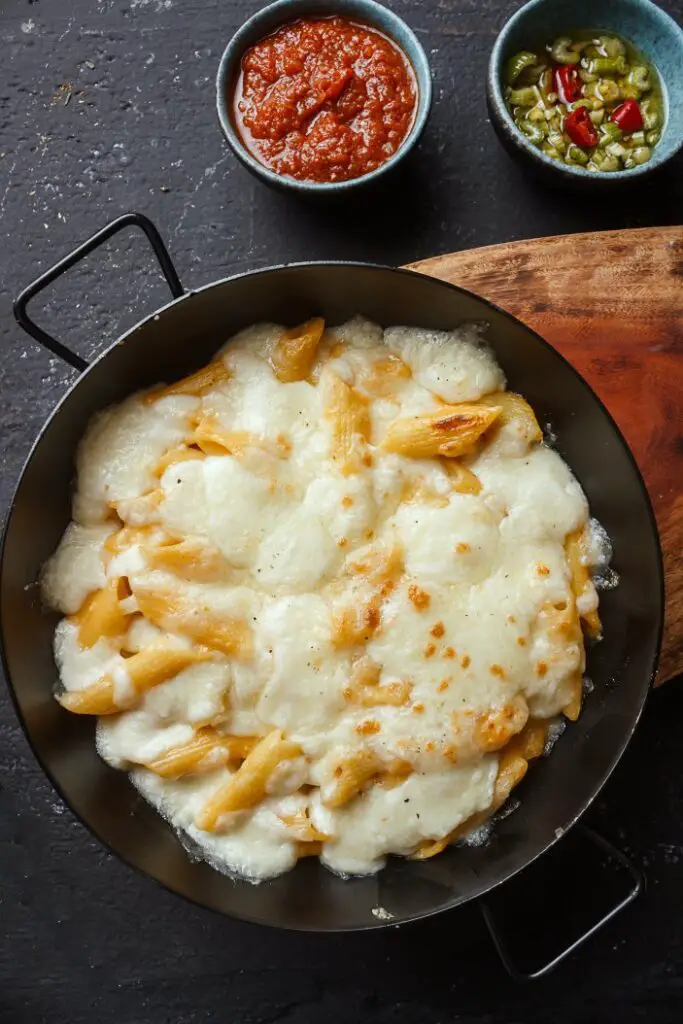
How Much Macaroni and Cheese Should I Serve Alongside Chicken for a Party of 30 Guests?
When deciding on the chicken quantity for 30 guests, consider serving about 10 pounds of chicken. As for the macaroni and cheese, plan on making 6 pounds of pasta with plenty of creamy cheese sauce. This should ensure everyone gets a hearty portion of both dishes during the party.
Conclusion
Making macaroni and cheese for a large gathering doesn’t have to be daunting. With some advance preparation and the right techniques, you can put together a crowd-pleasing dish that everyone will love.
The key is taking the time to accurately calculate how much pasta, cheese, and other ingredients you’ll need based on your headcount. Undercooking the macaroni slightly and making the sauce in advance will streamline the process later on.
When it comes to cooking methods, both baking and stovetop have their pros and cons to weigh. Just be sure to keep the finished dish hot and fresh with sternos or a low oven if baking. However, you cook it, combining perfectly al dente pasta with a rich, creamy cheese sauce is sure to be a hit.
Now you have all the tips you need for mac and cheese success when serving a large group. Just remember the basics: plan ahead, prep some components early, and use the right techniques for cooking. Your guests will be coming back for seconds!

